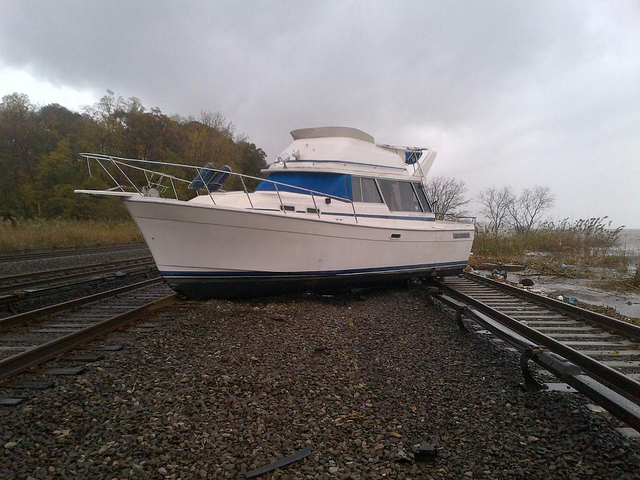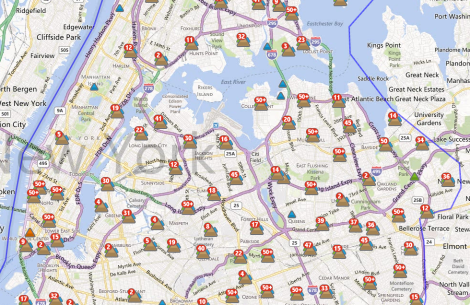ConEdison, the electricity provider for New York City, says that überstorm Sandy caused the “worst damage” in its history. Which seems about right; some three-quarters of a million New Yorkers are without power.
ConEd (as it’s better known) has a map of outages. Here’s a section of it, as of early this afternoon.
A quick geography lesson. At left is the island of Manhattan, the densest part of the city. In the center and to the right is mostly Queens; there’s a bit of Brooklyn at lower left. At the top is a smidge of the Bronx.
You’ll notice that most of the map has outages (those little triangles with numbers) pretty consistently distributed. But the long, finger-like island of Manhattan is different. There is a cluster of 50-plus outages at the lower end, but very few outages up north.
There’s a reason for this. In a conference call last night, a ConEd spokesperson estimated that the outages were about evenly split between those resulting from a substation explosion noted here and those resulting from downed power lines. The outages in lower Manhattan are from the substation explosion. The more distributed outages are largely due to power lines going down. That’s why there aren’t many outages in upper Manhattan: The densely packed housing is served by buried power lines and wasn’t affected by the substation explosion.
At Slate, Matt Yglesias describes the economics of burying power lines.
It’s not a coincidence that the power lines are buried [in downtown D.C.] but not in more outlying areas. Where people are more densely settled, expensive infrastructure is more affordable to install. The weighted population density of the United States is pretty low by international standards which makes it hard to do this. And there’s nothing wrong with that if, all things considered, it’s how people want to live (we have a big country) but unfortunately we have a lot of laws on the books that prohibit denser construction and force us onto this bad-infrastructure equilibrium.
One of the concerns with the crane collapse in midtown Manhattan is that the broken section might fall into the street and cut buried power lines. It takes a lot more than a tree branch when the power lines are underground. Manhattan is dense enough that streets hide our infrastructure: power lines, steam, sewers, the whole nine. Which is more costly. But at those moments when tens of thousands of people aren’t plunged into darkness during a hurricane, the cost becomes more than worth it.




